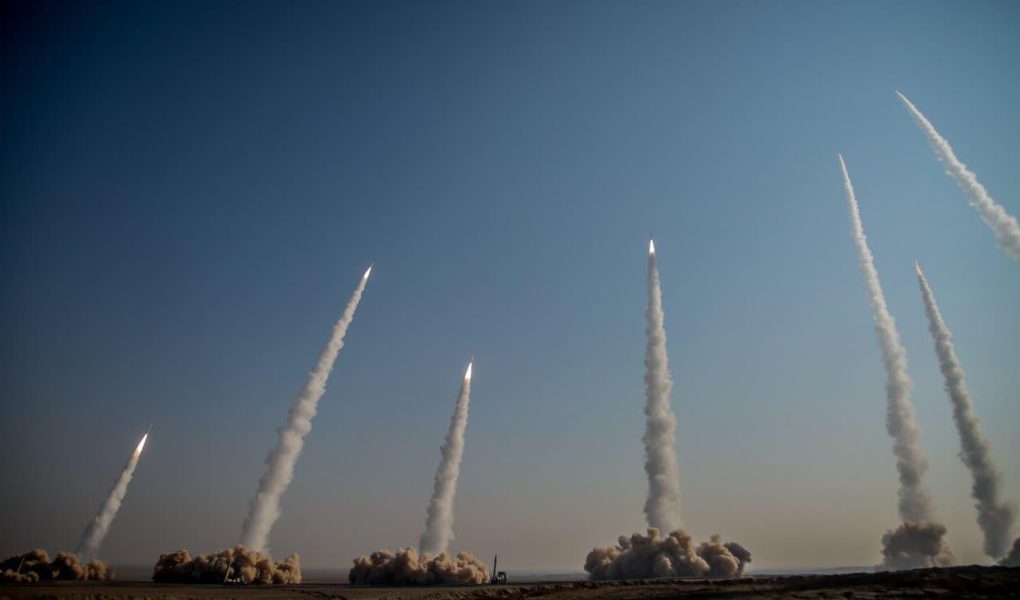Iran’s recent missile blitz against Israel pushed regional tensions to a boiling point. Its decision to help Russia do the same to Ukraine will have serious implications for both Europe and the Middle East.
Most immediately, Russia’s acquisition of hundreds of Iranian Fath-360 missiles will help shift the fortunes of war on Ukraine’s battlefields.
Roughly similar in range, precision, and mobility to munitions used by the US-made HIMARS, these tactical missiles offer critical margins of victory for Russian forces already gnawing away at Ukraine’s defenses and precious manpower.
According to Secretary of State Antony Blinken, boosting Russia’s short-range firepower also enables it to “devote its own missiles to longer-range targets.”
This threatens to create the longest and darkest winter of the war yet, as more Russian glide bombs, cruise missiles, and drones strain Ukraine’s air defenses and pulverize its cities, critical infrastructure, and other targets so vital to its strategic depth and morale.
Iran’s Growing Role
The fact that a military goliath like Russia had to dig deep and ask Iran for such help highlights how profoundly Vladimir Putin miscalculated and underprepared for his invasion of Ukraine.
But by boosting the odds that he can ultimately overcome this strategic mistake, it also feeds his ambitions to further hammer Ukraine and threaten NATO for supporting Kyiv.
The Iranian regime and its Islamic Revolutionary Guard Corps expect a windfall in return. As with its supply of attack drones to Moscow since 2022, Tehran will glean crucial technical and tactical know-how from Russia’s combat use of these missiles, which it can then apply to its own efforts against Israeli and US air defenses in the Middle East.
Tellingly, Iran drew on its first all-out attack on Israel in April to augment its massive missile strike last month. In turn, the growing use of these weapons by Iran and its “ring of fire” gives Russia useful data to improve its attacks on Ukraine.
If past is prologue, Iran’s arms deal with Russia also generates momentum for deeper and more enduring cooperation between two of America’s foremost adversaries.
Tehran parlayed its drone assistance into a lucrative advisory role for Moscow, stationing Islamic Revolutionary Guard Corps personnel in Crimea and Kherson, and even building a factory to mass-produce attack drones on Russian soil.
As a quid pro quo, Iran demands cutting-edge Russian combat aircraft, advanced surface-to-air missiles, and radars to shield its expanding nuclear weapons infrastructure. Active defenses have long been a weak spot in Iran’s atomic ambitions, and filling this capability gap could fuel Tehran’s destabilizing sense of its own latent nuclear deterrence.
A wreckage of what appears to be an Iranian Mohajer-6 drone that Russia is using in Ukraine. Photo: Ukraine Weapons Tracker
Axis of Adversaries
This missile transfer also reflects deepening strategic and operational ties among US adversaries in overlapping crises across Europe, the Middle East, and the Indo-Pacific.
Moscow, Beijing, Tehran, and Pyongyang increasingly work together to evade Western sanctions, share intelligence, conduct exercises, bolster one another’s military supply chains and even frontline forces, and threaten the very viability of Ukraine, Israel, and one day Taiwan.
If Russia pays no real cost for supporting Iran’s nuclear defenses, similar support for North Korea’s nuclear infrastructure could be in the offing as well.
The missile transfer is the latest example of Iran’s growing readiness to flout warnings from America and Europe. Having called Washington’s bluffs on its nuclear program and proxy aggression against US forces, Tehran will continue enabling attacks by rogue regimes and terrorists that target civilians and destabilize US partners across multiple continents.
In this light, US and EU decisions to slap new sanctions on specific Iranian officials and airlines cannot be expected to halt this aggression any more than past rounds of clearly limited economic penalties.
Iran’s tightening ties with Russia should underline the urgency and importance of a much stronger US-led pushback against Tehran and Moscow.
Reinforcing Sanctions
After debating themselves publicly for years, the United States and its European allies must finally initiate the “snapback” of tough UN Security Council sanctions and embargoes on Iran’s arms deal with Russia and other proliferation.
The EU should also fulfill its abandoned threats to reimpose punishing sanctions on Iran’s banking and financial sectors.
In tandem with overdue enforcement of existing US and EU sanctions on Iran and Russia, these initial steps will at least signal stronger intent by helping choke off key revenue and weapons streams for Tehran and Moscow.
But ultimately, addressing this threat also requires that America work with its partners to deny and defeat Iran’s proliferation and Putin’s aggression more concretely.
Israel and Ukraine desperately need US munitions and permissions to take out Tehran’s missiles in the air — and on the ground. Only then will Iran truly start to think twice about destabilizing the Middle East and Europe.
Lt Gen Thomas Bergeson, USAF, (ret.) is former Deputy Commander, US Central Command and a participant with the Jewish Institute for National Security of America’s (JINSA) 2023 Generals & Admirals Program.
Jonathan Ruhe is Director of Foreign Policy at JINSA.
Originally Published in The Defense Post.

